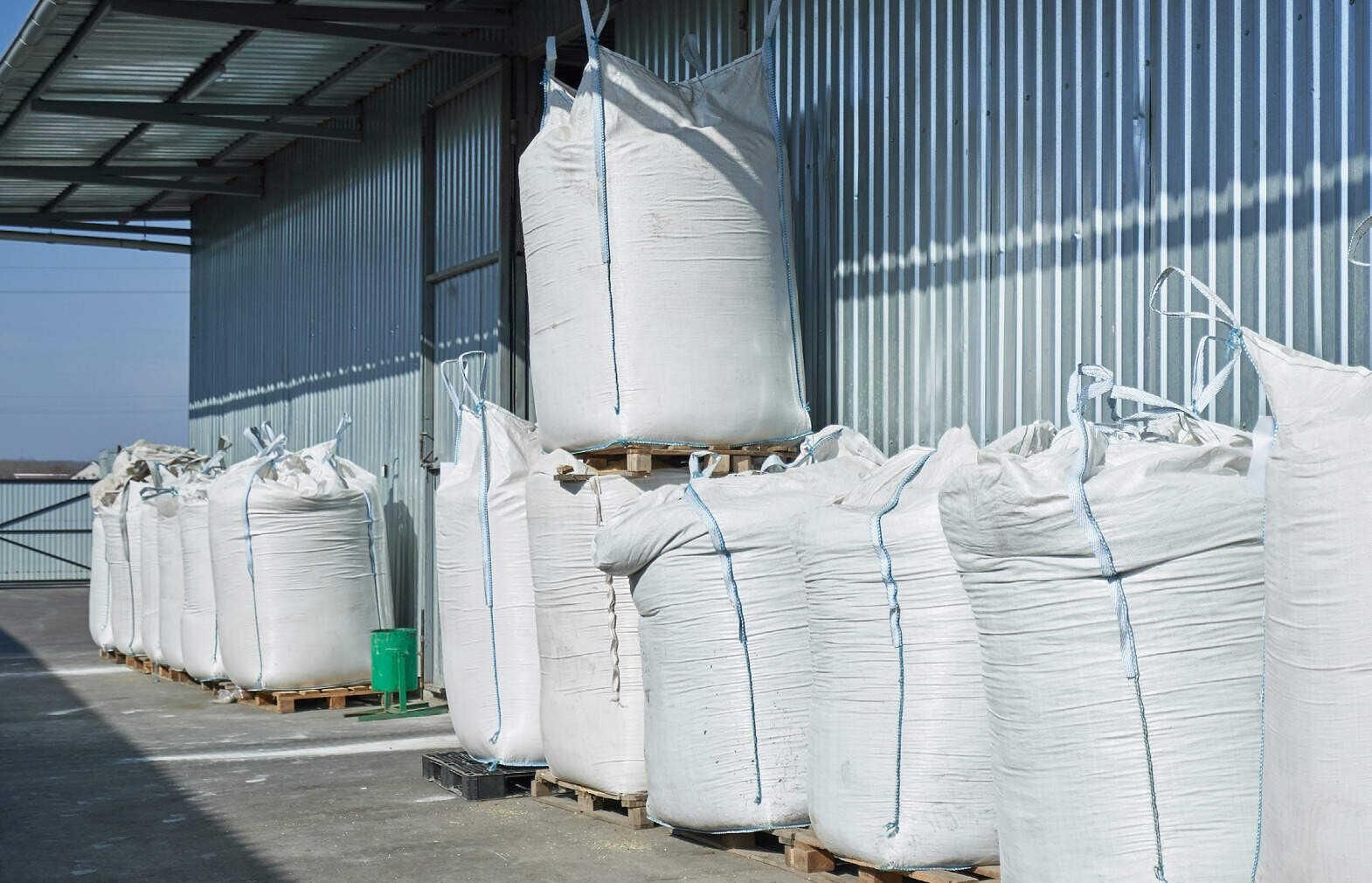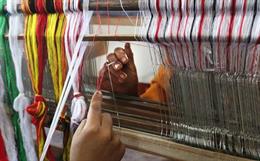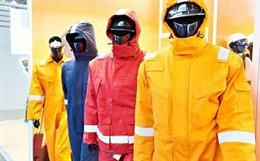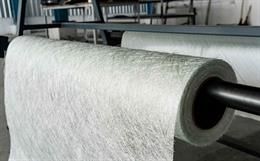The utility of packaging textiles is highly variable, providing not only protection from the environment but also functional benefits. A lot of these textiles, such as tarpaulins, are easy to use for years or decades before they wear out. However, they often utilise protective coatings and manufacturing methods that are harmful to the environment and to the people who work closely with these textiles. Others (especially those that absorb moisture or require sterility) can only be used once. In all cases, sustainability is a key consideration. How can the companies that use these packaging textiles maximise their profit margin while minimising their impact on the world around them? Thankfully, there are a number of innovations in the field of packaging textiles. These innovations are bringing new life to one of the oldest industries in the world, and they can help to ensure the future health of the planet as well. Whether they are combining the function of several materials, using sustainable materials or recycling waste items, here are a few of the ways that the manufacturers of packaging textiles are minimising their impact on the environment.
The History of Textiles in Packaging
Fibrous packaging materials were believed to have been first used in the first or second centuries BCE, when ancient Chinese people began using paper and specially treated mulberry bark to wrap food, tea and medication. Wood, metal, stone and clay still reigned supreme in most circumstances. The primary exception to this rule was for the transport of consumables, especially ones like grain. And as the oldest form of textile, nonwovens were well represented as well. As food storage advanced and pre-packaged flour gained traction, people needed a way to store and transport this flour as well, and for this they turned to bags made of cotton. This fabric, usually muslin, has a very dense weave to keep the powder inside, and it was still in common use in the 21st century. During World War II, many companies made the shift to using dressmaking-quality fabrics and decorative printing in their packaging textiles because consumers were using these sacks as inexpensive sources of material for clothing. After the war ended, paper became the norm in many places, but the durability and ease of use of fabric for packaging bulk powdered goods is still unmatched.
The world of packtech may be centuries old, but the technology is ever evolving. However, the more humanity learns about its impact on the planet and its ecosystem, the more care that people need to take when it comes to treating these packaging textiles as disposable.
The Intersection of Functional Textiles and Packaging Textiles
The designers of packaging materials tend not to have aesthetics in mind. But form inevitably follows function, which means that the manufacturers of packaging textiles do need to pay attention to the appearance of the items they create. In fact, improving the function of packaging textiles can reduce the industry’s environmental footprint: making packaging flame retardant, water repellent, antibacterial or self-cleaning can reduce the number of steps required to create the items and the resources required to transport them.
Luminescence is highly sought after in functional textiles, and in packaging, they have the potential to add a layer of safety for the people who work around them. However, many of the luminescent fabrics already available do not lend themselves well for use in packaging. They generally require ‘charging’ through exposure to sunlight, or they need batteries or another external power source. The coatings on these UV-reactive textiles tend to wear off with time, as well. One group based in Saudi Arabia published an article in ACS Omega in 2022 that aims to change this. The writers of this paper have developed a luminescent nanocomposite coating that can be added to linen packaging, enabling the fabric to glow green under ultraviolet light. This film is highly durable and shows great promise in anti-counterfeiting measures, and the process of creating and applying it is ecologically benign. Not only that, but this treated linen has shown enhanced antimicrobial properties and ultraviolet shielding as well.
Other intelligent packaging solutions that reduce the complexity of packing items include thermochromic pigments that indicate the temperature of the packaging, traceability and freshness markers that detect the deterioration of perishable items and security detectors that indicate whether a package has been opened in transit. One of these functional textiles is especially promising. In a 2021 paper published in Environmental Chemistry Letters, a research team announced a functional method of infusing nanomaterials into textile packaging to imbue any number of these properties into the fabric. In particular, the team points out the development of a nanocoating that makes textiles flame-retardant while being non-toxic to the environment. Even after being washed fifty times, this coating remained stable and effective, allowing this packaging to be reused over the long term2.
Sterility is one of the keys to creating packaging for medical devices, and one of the common methods of achieving this sterility involves irradiating textiles or coating them with chemicals. A team in Croatia recently revealed a new method of utilising 3D-woven fabric that creates an antimicrobial barrier. This paper (published in Mechanical Response of Fibre-Reinforced Polymers in 2022) shows that by integrating this property into the structure of the fabric, they were able to greatly simplify the sterilisation process and potentially revolutionise the packaging of medical technology3.
Rugged, Recyclable, Reusable Materials
As the chemical base of many plants, including cotton, hemp and trees, cellulose is one of the most common packaging materials in the world. Although it is the most abundant organic polymer in the world, humanity’s sourcing of this cellulose can pose major problems for the environment. Removing old-growth trees from the ecosystem in order to create single-use packaging textiles is especially problematic. This is why it is critical to develop long-term solutions that combine durable materials with sustainable ingredients.
Packaging textiles should be reused whenever possible. However, many applications (especially in food and medicine) require single-use packaging, which is often made from plastic. In 2022, a research team at the Chinese University of Hong Kong developed a more sustainable alternative to this. The team derived a method of creating food-safe plastic packaging from cellulose fibres instead of petroleum. Implemented at scale, this will provide new utility for previously wasted wood chips and reduce humanity’s dependence on non-sustainable resources.
Another way to implement sustainability in the world of packaging textiles is by reusing the base materials of said packaging. Most commonly, this takes the form of using recycled cotton. One of the primary obstacles to this is the fact that recycled fibres are too short to spin into new thread, greatly reducing their utility. That is why the Relooping Fashion Initiative exists. Since 2018, the company’s cellulose dissolution technique has enabled textile manufacturers to dissolve recycled cotton and re-form it into anything from clothing to customised packaging material. The Relooping Fashion Initiative estimates that cellulose dissolution can also reduce the fashion industry’s water usage by 70 per cent and its energy consumption by 50 per cent4. Initiatives like these can have a huge impact, since they allow for the continued use of post-consumer goods as well as incentivising more sustainable creation methods. In addition to its obvious environmental benefits, this method completely avoids using sulphur. For packaging textiles that hold food (such as flour sacks), this greatly enhances consumer safety as well.
Jute sacks (also called hessian sacks or gunny sacks) have long been a cornerstone of shipping goods in bulk. Their strength and flexibility allow these sacks to handle up to a few hundred kilograms of goods at a time. Unlike cotton, they keep their shape even after repeated use. In recent years, jute has found its way out of the industrial and agricultural spheres and landed in the hands of consumers. Shopping bags and tote bags made from jute are becoming popular in many areas. Because they are highly customisable, extremely durable and fully biodegradable, these shopping bags are propping up the jute farming industry in countries like India and reducing the demand for synthetic alternatives in countries like the United States.
Where it is not feasible to use natural fibres like cotton or jute, nonwoven textiles are becoming stronger and more sustainable as well. In areas that ban or restrict the use of single-use plastic bags, these nonwoven alternatives are inexpensive and highly convenient. Because they can be made from viscose, polyester, polypropylene and polyethylene, they can also be made from recycled materials. However, shopping bags are far from the only utility this material has. As manufacturers make advancements in the strength of this nonwoven textile, a lot of companies have embraced its customisability for the packaging of bulky or oddly shaped items such as duvets. Unlike traditional fabric packaging, this nonwoven is also easy to make water-resistant. And when jute is produced without the use of hydrocarbons, its environmental footprint is reduced even further.
Polyethylene terephthalate (PET) is one of the most recyclable forms of plastic. However, the use of PET in packaging has lagged behind in this regard, with many manufacturers preferring the convenience of virgin PET over recycled. German firm Freudenberg Performance Materials aims to change this by using recycled PET in its Evolon packaging textile. In addition to reducing the carbon footprint of these technical packaging textiles by 35 per cent, the technique lowers the water and energy use5. These fabrics create protective packaging for highly sensitive utilities, including automotive parts, healthcare technology and specialty gear. The starkest of these improvements is in Freudenberg’s use of minerals and metals, but using recycled plastic provided improvement on every one of the variables that a study measured.
Another more sustainable option for plastic-based packaging textiles is polylactic acid (PLA). PLA is a popular addition to fruit and vegetable netting, tea bags and other food packaging because of its heat resistance and extreme tensile strength. Lactic acid (the base of PLA) comes from the fermentation of glucose and/or sucrose, commonly from corn starch, waste livestock feed and even spent coffee grounds. These textiles can be made nonwoven for extra absorbency and heat sealable. Some can even be weldable with heat or ultrasonic techniques. And PLA is industrially compostable, making it a great option for packaging as a whole. As textile production with PLA grows in popularity and as people develop more utilities for PLA in 3D printing, the circularisation of this economy will only improve.
While the fashion industry is responsible for the majority of textile waste, single-use packaging textiles do produce a significant amount of this waste. Twin sisters Leila and Neeka Mashouff have created a company called Rubi Laboratories that aims to end this, and Rubi’s technology shows great promise when it comes to reducing the environmental impact of single-use packaging textiles. Rubi creates lyocell and viscose fabrics directly from atmospheric carbon dioxide, rather than from wood pulp. This ‘cell-free’ manufacturing method uses natural enzymes to convert CO2 into cellulose, and then Rubi spins this pulp into fibres using existing industry methods. In the process, excess carbon dioxide is not only diverted from the atmosphere, but plants are removed from the equation entirely. This reduces water usage and transportation costs, and it allows trees to continue converting CO2 into oxygen.
Finally, packaging textiles can find new lives in other industries as well. A company called The Hammock Source is one of the United States’ leading manufacturers of handcrafted hammocks for camping and outdoor relaxation. From the company’s inception, sustainability has been one of its top priorities. Its line of Durawood lumber is entirely recycled from high density polyethylene (HDPE) plastic. More to the point, the brand began to make its Duracord cords with recycled packaging textiles, many of which were sourced directly from other companies’ waste piles.
Biodegradable and Compostable Packaging Textiles
Many of the textiles used in packaging are single use by necessity. There is no market for reusing food soaker pads, for instance. While the manufacturers of these textiles have heavily leaned on budget-friendly plastic, countries, trading blocs and political entities such as the European Union have been placing restrictions on their use. With the EU Green Deal now in effect, companies that wish to do business in the European Union have to reduce their production and use of single-use materials of all types, which means creating more eco-friendly packaging all around. For these utilities, many companies are turning to compostable or biodegradable materials. If an item can only be used one time, after all, there is no reason that it should wither forever in a landfill or the ocean after it has been spent. In the absence of circularisation, minimising one’s impact is key.
One stellar example of this shift from the world of oil-based polymers is visible in airlaid nonwoven textiles. These absorbent textiles are common additions to food packaging, especially for moist solids such as meat, because they absorb excess moisture and enhance the preservation of the food. In many locations, these single-use textiles are made from wetlaid or spunbond materials, and these fabrics are generally not biodegradable. Airlaid textiles, on the other hand, are generally created from cellulose. Companies like the Italian conglomerate Magic Srl have capitalised on this. Magic combines additive-free Airgel with waste cellulose fibres and Magic’s proprietary Spongel powder. This powder is super absorbent and completely biodegradable. While this material is growing in popularity in Europe, its adoption in other continents has been slow.
Another recent innovation comes from Elliott Absorbent Products in the United Kingdom. While its UniDry range of Dryline meat pads may not use airlaid technology, its ‘Infinity Core’ absorbs between 7.5 and 26 litres per square metre of textile. This ultra-thin technology also uses half the plastic and cellulose of traditional pads, making it easier to transport and store, and reducing shipping emissions by two thirds6.
Some textile producers are taking a different approach to making their packaging textiles biodegradable. Synthetic fabrics make up well over half of the world’s textiles. Many of these will last for millennia after they are discarded, while others take hundreds of years to degrade. When they do break up, they release microplastics into the environment, polluting water supplies. United States firm Intrinsic Advanced Materials (IAM) is attempting to change this with its new CiCLO technology. The CiCLO fabric additive combines with artificial fibres such as nylon and polyester at the beginning of the textile’s life cycle. Comprising less than one per cent of the end material’s fibre makeup, it enables the artificial fibres to decompose naturally in about three to four months, or at about the same rate as wool7. The additive creates microscopic biodegradable spots in the fibre’s matrix, acting as nutrient sources for the microbes that help break them down.
Reusing waste material is one of the most effective methods of improving a company’s environmental impact, and in general, it reduces the cost and environmental footprint of sourcing these materials as well. Beaver Paper, one of the world’s leading providers of dye-sublimation media and specialty paper, is at the forefront of this. In 2022, the brand launched its TexSeal Eco Pouches as a novel form of sustainable paper packaging. These pouches are easy to convert for a variety of utilities, including pouches, bags, sheet lining and flow packs, and they are available in thickness from 40 to 80 gsm. Created from waste wood, these flexible, printable textiles have already begun to make changes to the world of packaging.
Other producers of packaging textiles prefer to reduce the need for cellulose in the first place. Bamboo fibre is not only used for luxury fabric and yarn, but for creating paper and other packaging materials. Unlike many other plants, bamboo grows exceedingly quickly, with one stalk able to gain nearly a metre in height every day. And a bamboo forest can reach maturity in a single growing season. Blends of bamboo and cotton are popular packaging textiles in many circumstances thanks to their ease of use and their antibacterial qualities. Packaging companies such as Golden Arrow, meanwhile, specialise in using moulded bamboo fibres in their products.
Packaging Textiles that Protect their Items — And the Environment
Humanity’s understanding of the world is fractal. The more people learn, the more there is to discover. When it comes to humanity’s impact on the environment, the common world-changing innovations will have lasting effects years or decades down the line. The scale of the packaging industry means that even small changes to its processes and materials can have a dramatic impact on its environmental footprint. Whether they are using innovative materials and methods or they are discovering new ways to bring new life to their used packaging, key industry players are making huge leaps in this regard.
Sustainability should be at the core of the textile industry. Not only the survival of the industry but also the survival of humanity depends on it. That is why it is so important to reduce the textile industry’s environmental impact, and to reuse and recycle materials wherever possible. Packaging textiles are particularly at the core of this, considering how ‘invisible’ they can be to end consumers. While individual buyers may be environmentally conscious and recycle the packaging they receive, they do not see the packaging that is used during the shipment of their goods. With the scale of the industry being as large as it is, innovating in sustainability has an outsized impact on the world.
- https://www.smithers.com/resources/2020/mar/smithers-forecasts-global-packaging-market-to-grow
- https://link.springer.com/article/10.1007/s10311-020-01089-4
- https://www.mdpi.com/2073-4360/14/22/4952
- https://goexplorer.org/turning-worn-out-cotton-into-high-quality-fibers/
- https://www.freudenberg-pm.com/Press/2023/2023-01-10_Technical-packaging-textiles
- https://www.nonwovens-industry.com/issues/2021-08-01/view_features/nonwovens-in-food-packaging/
- https://ciclotextiles.com/







